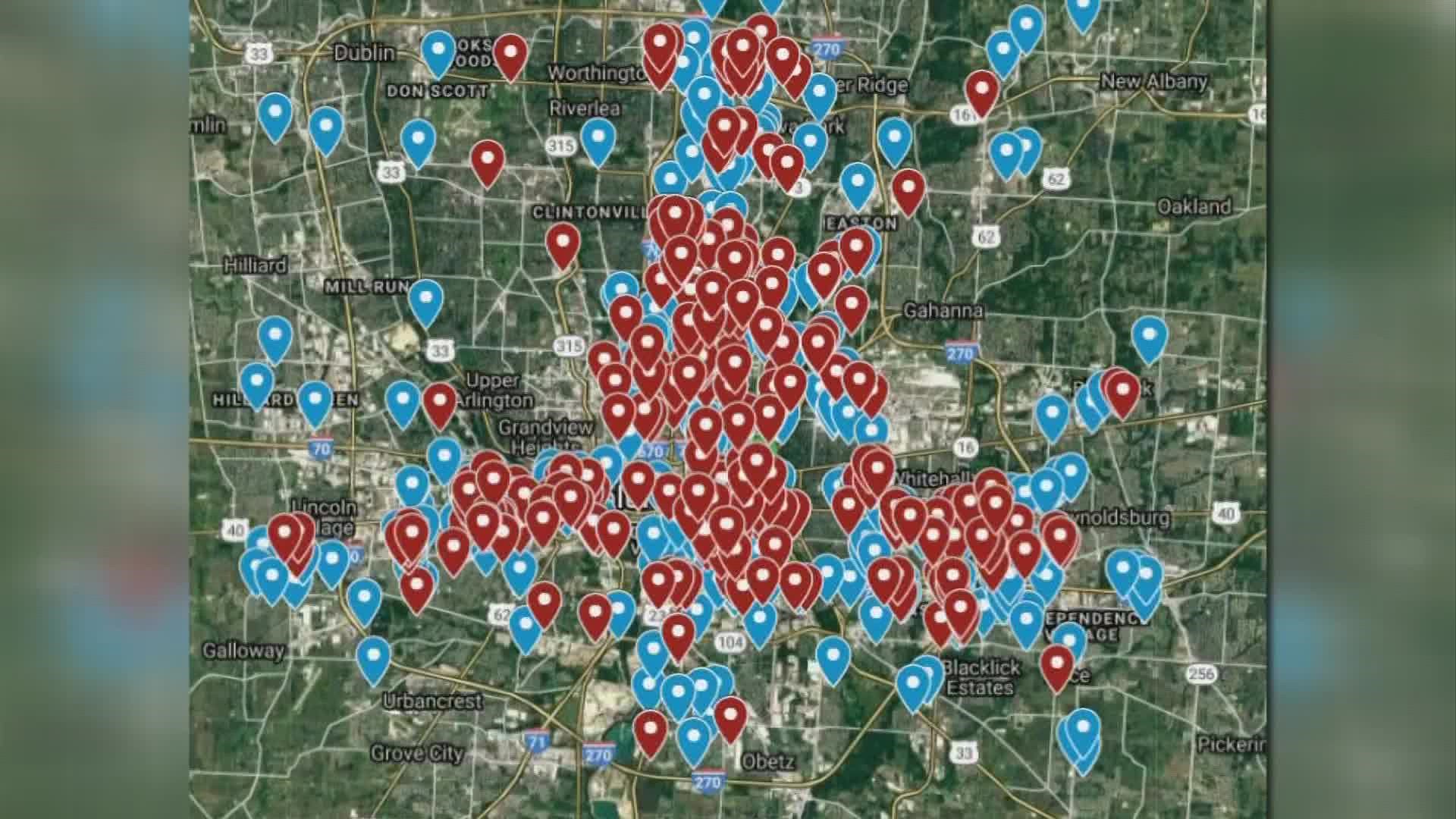COLUMBUS, Ohio — Columbus is nearing a record this year, though it’s not one the city will brag about. America’s 14th largest city is on track to report its highest numbers of homicides in a year.
The map below shows every murder in Columbus since 2017.
The red dots represent unsolved cases, the blue are those “cleared” by arrests. With more than 650 homicides in the past five years, the Columbus Division of Police has made arrests in a little more than one out of every two.
But simply reporting the number of killings in a given year, or that this is the 150th homicide or the 160th or so on, fails to provide context as to what is the human cost of this violence.
To better understand that, 10 Investigates interviewed police, the families of victims and mapped more than 670 homicides that have happened in Columbus between 2017 and 2021.
What we found were areas of the city where police have historically had a hard time making arrests.
To put it another way, if you are killed in Columbus, the chances of police solving your case may depend just as much on where it happened as who did it.
10 Investigates identified more than a dozen “dead zones” or “no arrest zones” where unsolved murders have been closely clustered together and arrests are few.
At a time when everyone is talking about increased violence in America, our investigation found that a street code that pushes retaliation and silence over cooperation with police could be the lynchpin in keeping many of these case unsolved – robbing families of justice.
Watch our full investigation and hear from the people behind the numbers: a grandfather who buried his 15-year-old grandson, a family dealt two hardships – two murders, nine months apart and friends who point out a racial disparity in a city where a code of the streets appears to lead to more killings.

